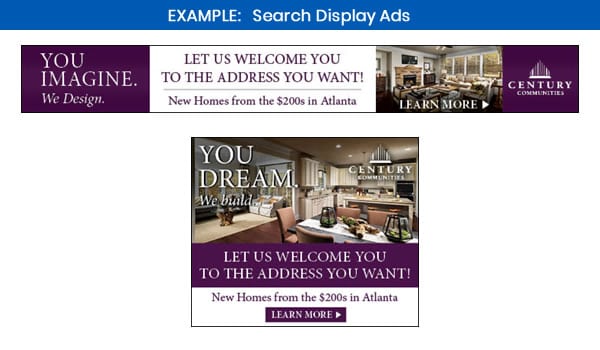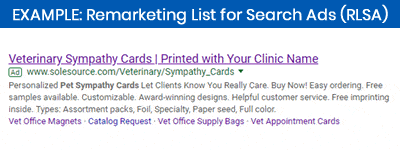I’ve often been asked by family, friends, and even my hairdresser, “What are these ads that follow me around the Internet after I’ve visited a website?”. You may have seen them yourself on Google, Bing, Facebook, or even other websites and wondered the same. I’ll explain what these ads are and how you can use them to help drive customers and sales to your business.
What Is Remarketing?
The ads that we’re talking about are referred to as “Remarketing” or “Retargeting” ads. Simply put, Remarketing involves showing advertisements to people who have already visited a particular website or have used a specific mobile app. In order to use Remarketing, snippets of code are placed throughout your website or mobile app. You can then create Remarketing audience lists, which consist of individuals you would like to target for Remarketing ads.
Why Should I Use Remarketing For My Business?
One of the main advantages of Remarketing is that you’re able to re-connect with individuals who have previously visited your website but did not convert (i.e. make a purchase, fill out a “Contact Us” form, etc). These people already have expressed interest by visiting your website. Remarketing ads can be shown across the individuals’ various devices. Advertisers have the ability to reach people when they’re searching on a search engine like Google, Bing, or Yahoo, when they are visiting other websites, and when they are using other mobile apps.
Another benefit is that you’re able to create highly targeted Remarketing lists and even tailor your ads to those individuals if you wish. For example, you might want to advertise a special 10% off promotion to individuals who had placed $500+ worth of products in their shopping cart but did not make a purchase. Perhaps this extra incentive will help them to close the deal! Or, you can target a potential home buyer that visited a specific community page on your website, with ads highlighting the community’s amenities, model openings, etc.
Types of Remarketing
There are a variety of different types of remarketing. The main ones that we will focus on are: Standard Display Remarketing, Dynamic Remarketing, and Remarketing Lists For Search Ads.
1. Standard Display Remarketing Ads: consist of text, image or video ads that show when a user is browsing a website, mobile app, or video content that is part of a Display Network. As an example, Google’s Display Network consists of over 2 million websites and has a 90% reach of Internet users. Unlike Dynamic Remarketing ads, Standard Display Remarketing ads do not show specific products or services you viewed on a website. They tend to be a bit more general but still perform very well for a variety of industries.

2. Dynamic Remarketing Ads: takes your Remarketing efforts to the next level with a highly personalized ad based on behavior. These ads allow you to incorporate particular products and/or services that a user had previously viewed on your website.


Dynamic Remarketing ads pull data from a feed that includes all of your products/services as well as specific details like unique IDs, prices, image URLs, and much more. Another element that differentiates Dynamic Remarketing from Standard Display Remarketing involves the tag: custom parameters are used to associate website visitors with unique product IDs within your feed. Conversely, Standard Display Remarketing does not incorporate these.
3. Remarketing Lists For Search Ads (RLSA): are ads that are shown to users who have previously visited your website when they are searching on Google, Bing, or other search engines. Unlike Standard Display Remarketing Ads and Dynamic Remarketing ads, RLSA can only be text ads.

Typically for RLSA, bids would be increased for individuals who have visited your website before and are searching using keywords you’re currently bidding on. Another RLSA strategy involves bidding on keywords that you wouldn’t normally target (typically broader keywords) for individuals that have already visited your website. Conversion rates tend to be higher for these broader keywords when targeting searchers who have previously been to your site vs searchers who haven’t been.
HOW TO GET STARTED
Some types of Remarketing ads will perform better than others for your business, but the ones you choose can work in conjunction with each other to drive additional sales and leads.
If you need help implementing Remarketing or would like to step up your current Remarketing game, we would love to help. Contact us today here at Blue Tangerine!
